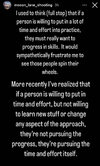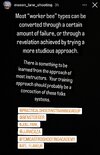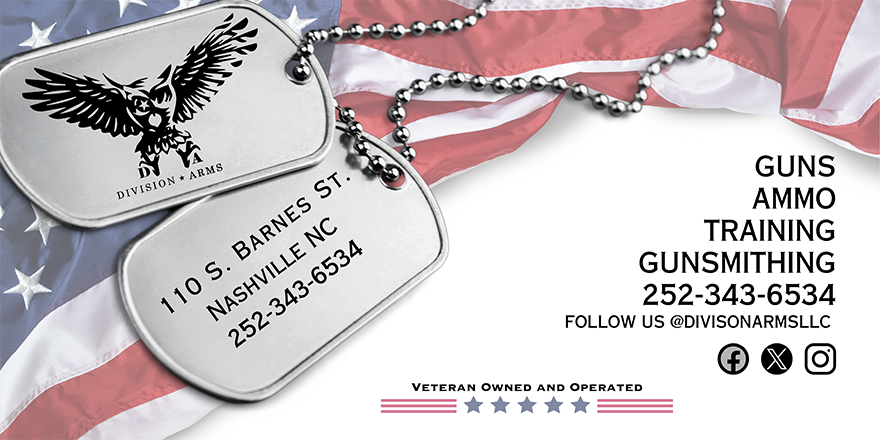Damn_Yankee
"Now go away, or I shall taunt you a second time"
2A Bourbon Hound 2024
Supporting Member
Yikes. I say BS! I would never, never ever suggest taking your finger off the trigger in a course of fire, whether it is intentional or not. That leads to or can lead to slapping the trigger.
Train more and learn your trigger.
Yup, all those guys are 1%'ers, so fair enough. For sure no argument here.Please shoot a 2 second bill drill without slapping. Or win multiple national and international championships like Ben did.
It’s not possible.
Slapping is fine. If you have a good grip and correct hand tension, you can slap holes right next to each other in the A-zone from out further than you think.
Which drills?If Ben says it, you can probably count on it. I went from c to a in a few months of doing his drills daily. He operates on a different level. What uspsa did to him was a disgrace.
Well said John.Here's my take,
Poor trigger control, is one of many forms of sight picture / alignment disturbance.
Others are breathing, weak grip, no sight picture, no sight alignment.
If the firearms point of aim is true, and the shot is taken then the impact will be precise, if the firearms is stable during the firing sequence.
I'd you disturb the point of aim the preciseness of the shot can vary, AKA open the shot group up.
We have seen time and time again with handgun marksmanship that poor trigger control does not always impact the shot group negativity.
We have seen that not even having a sight alignment negatively impact the shot group (point shooting)
So then what's the stability factor then if it's not trigger control or sight alignment?
Grip my friend, grip.
If you have a damn good grip on that handgun that allows you do any level of poor "fundamentals".
Every single training technique in firearms training leads to one solution.
Stable platform
Trigger reset is a teaching tool to help new shooters focus on the front sight and trigger follow through. This leads to a stable platform.
It's not that reset fixed anything, it's that the shooter is focused on not disturbing the shot.
John
I do not think so.Different things work for different folks; do what works for you.
In my experience it's reverse to what you have wrote here.So I know that riding to the reset is possible on a 1911 because of the great triggers. It's not possible with Glock triggers because they are not very predictable on the reset distance.
Different shots/sight pictures require different trigger pulls.
Hosing 3 yard USPSA paper arrays and knocking over a 25yd 4" plate require different trigger presses/attention.
IMO, one size does not fit all.
I was trying to stir the pot 😜In my experience it's reverse to what you have wrote here.
Correct 100%If you convince yourself fast shooting and accurate shooting are two different concepts, you will never progress beyond hosing close targets and staging overconfirmed individual shots everywhere else.
The limitation is mental and comes from a lack of intentional exposure to shooting outside the comfort zone. It doesn’t help that most pistol instructors (especially service/LE-only backgrounds) are about as competent at performance pistol as deaf mute singing coaches.
If the pistol is pointed at the target, a slow squeeze, a fast squeeze, or a slap straight to the rear accomplish the same goal. If a faster trigger motion pulls you off target, (a) your trigger motion isn’t straight back, (b) your grip is a soup sandwich, or (c) both. Those are fixed by training the weaknesses, not by avoiding the errors forever with workarounds.
If you convince yourself fast shooting and accurate shooting are two different concepts, you will never progress beyond hosing close targets and staging overconfirmed individual shots everywhere else.
So you can mag dump your pistol when you shoot bullseye and hit the targets just as well?
Maybe I'm just confused since I can't shoot very fast.
Guys,No. Never said that. What I said was the accuracy is not dictated by the speed of the trigger press. When I shoot bullseye, specifically the rapid fire stage, the shot pace is based on the recovery of the sight picture. My RF strings are usually done in 7 to 7.5 seconds. My attention is on riding the recoil and getting a centered front sight in the white under the bull (or a dot wiggling in the center black).
I don’t laboriously drag the sear nose across the hammer hooks. When the eyes say it’s right, I want the shot to break immediately. I shoot the long line the same way, but it’s much slower—very fine errors in sight alignment make the difference between a called 10 and an 8 or 7. It’s visually slower.
I’m also cognizant that shooting one-handed like that requires absolute focus in grip pressures in a way that freestyle shooting does not. A good support hand grip can compensate for a lot of imperfect trigger movement. But, I’m not shooting high-90s RF targets by thinking about a slower trigger finger, ever.
The speed limit is always visual confirmation. Your eyes are the brakes. Consciously treating your trigger finger as a separate brake pedal is just double slow. The trigger is the gas pedal.
Now, you can take examples to extremes (3yd bill drills versus shooting a Contender for long range metallic silhouette), but niche examples don’t make rules. For basic USPSA and IDPA-type performance shooting: grip correctly, see “enough” confirmation, and move the trigger at basically any speed.
No. Never said that. What I said was the accuracy is not dictated by the speed of the trigger press. When I shoot bullseye, specifically the rapid fire stage, the shot pace is based on the recovery of the sight picture. My RF strings are usually done in 7 to 7.5 seconds. My attention is on riding the recoil and getting a centered front sight in the white under the bull.
Ok, that makes a little more sense. Thank you.
How many rounds are you firing in 7 seconds? You're a wonderful bullseye shooter and I'm not so I'm trying to educate myself.
Edited to add: Ah, I see you added a bit to that post. I do see what you're saying. Yeah, I totally get not focussing on the trigger pull and instead using the sight picture as your cue and letting it rip.


Rapid Fire is 5-round strings at 25 yards. The target turns for ten seconds and then hides itself again. It’s plenty of time with a .22, but the .45 is squirrelier, so most of that time is spent recovering from recoil and getting sight confirmation.
The CMP makes the .22 matches a little more interesting—start pointing down at a 45 and lift once the target turns. So you lose 1-2 seconds getting that first shot off.
Mason Lane (another one of those guys among the best in the world right now) just posted something salient this morning.
View attachment 753129
View attachment 753131
All of these guys teach “Trigger Control At Speed” in one form or another. If you haven’t tried it, you can do it dry or live. It requires a timer. Stand with your freestyle grip. Finger fully off the trigger. Set the timer to a random beep. Break the shot reacting to the beep. No staging. Finger off the trigger, straight back through the wall in one motion. Watch the dot or sights as they break. Mess with your grip until you can do that repeatedly with a minimum amount of dot or sight movement, as soon as possible. Then, drill that grip.
It’s completely possible to get yourself trained to hit a popper or plate at 25 yards in one unstaged trigger press.
….
Trigger reset is a teaching tool to help new shooters focus on the front sight and trigger follow through. This leads to a stable platform.
It's not that reset fixed anything, it's that the shooter is focused on not disturbing the shot.
John
I was trying to stir the pot 😜
Two years ago I was goofing around at SASP Nationals as a volunteer. Went to one of those tents that was about 110 degrees and shot one round with an air pistol. Using two hands since I'm a noob. James Hall came over and told me I needed to start doing it competitively. I did not know who he was at the time and I embarrassed myself by laughing in his face.
What I didn't realize is that he was serious. Anyway, I may end up putting an airsoft range in the new house so I can give it a go. James is a nice guy and we text each other once in a great while.
It’s not trigger control, it’s sight control. This problem is addressed by Ben and other top shooters.Different shots/sight pictures require different trigger pulls.
Hosing 3 yard USPSA paper arrays and knocking over a 25yd 4" plate require different trigger presses/attention.
IMO, one size does not fit all.
It’s not trigger control, it’s sight control. This problem is addressed by Ben and other top shooters.
I said different sight pictures require different trigger presses.
Not sure what you are saying?
I do not think so.
It's not different strokes of different fokes at all.
Shooting is the same for everyone.
Do not disturb the gun's orientation while presented to the target.
It's that simple.

